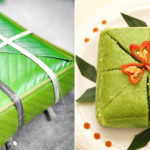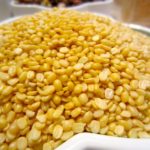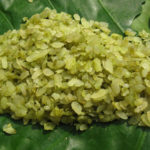The traditional art of making Banh Chung, a Vietnamese sticky rice cake, is a beloved family tradition during the Tet holiday. However, with everyone’s busy schedules, finding time to gather and prepare this special dish can be challenging. So, why not try making it at home? Join us as we explore the wisdom of past generations and learn how to select the perfect ingredients for your Banh Chung masterpiece.
Read on for some valuable tips:
1. Selecting Dong Leaves
 The Art of Choosing Dong Leaves
The Art of Choosing Dong Leaves
When picking dong leaves, look for those with an elliptical shape and a broad, expansive canopy. The leaves should be a vibrant, deep green, and the blades should be of moderate size. Always opt for fresh, supple leaves that can be easily folded for wrapping the cakes. Avoid wilted, dry, or stiff leaves, as they will make the wrapping process more difficult and may result in a less vibrant green color after cooking.
Each Banh Chung cake requires approximately four dong leaves, so choose them with care. Once you’ve selected your leaves, soak them in a basin of water for 30 to 45 minutes, then gently clean both sides with a soft cloth and water. After rinsing, dry the leaves and set them aside to air-dry completely.
Pro Tip: For an extra touch of elegance and taste, try using banana leaves instead of dong leaves. Soak them in warm water to soften, then cut into the desired shape and size.
2. Choosing the Right Binding Lat
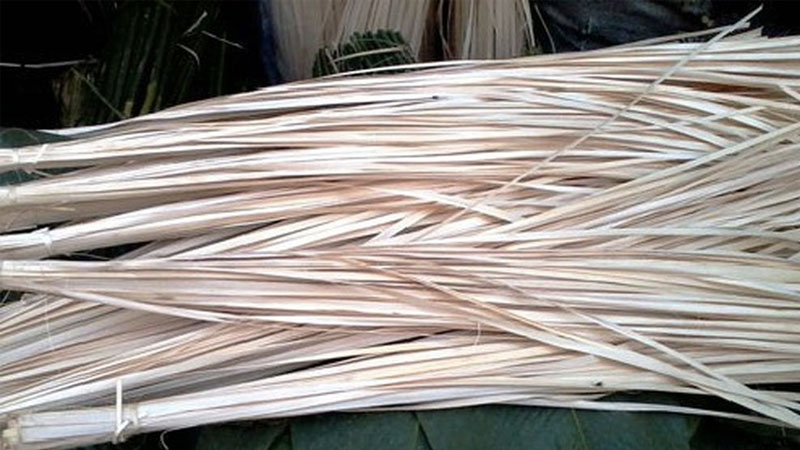 Selecting the Perfect Binding Lat
Selecting the Perfect Binding Lat
The binding lat, or string, used for Banh Chung is traditionally made from giang (bamboo). You can either purchase pre-split giang or buy the whole stalks and split them yourself. Opt for thin, soft, and flexible giang lat, as this will make wrapping the cakes a breeze. The ideal length for the lat is between 70 and 90 cm.
If you’re starting with whole giang stalks, remove the outer layer and soak them in water to soften before splitting. Choose fresh giang without knots or wormholes for the best results.
3. Picking the Perfect Sticky Rice
 The Secret to Selecting Sticky Rice
The Secret to Selecting Sticky Rice
When it comes to sticky rice, many families prefer Thai sticky rice for their Banh Chung. Look for grains that are evenly sized, with a slight sheen. Avoid broken or cracked grains, and steer clear of bags with a high proportion of yellow grains. In addition to Thai sticky rice, you can also opt for sticky rice from the North or Central regions of Vietnam.
The hallmark of good-quality sticky rice is its milky white color. When you bite into it, you should experience a subtle sweetness and a delicate aroma. For an extra touch of fragrance and color, try soaking the rice in pandan leaf water before cooking.
4. Choosing Green Beans
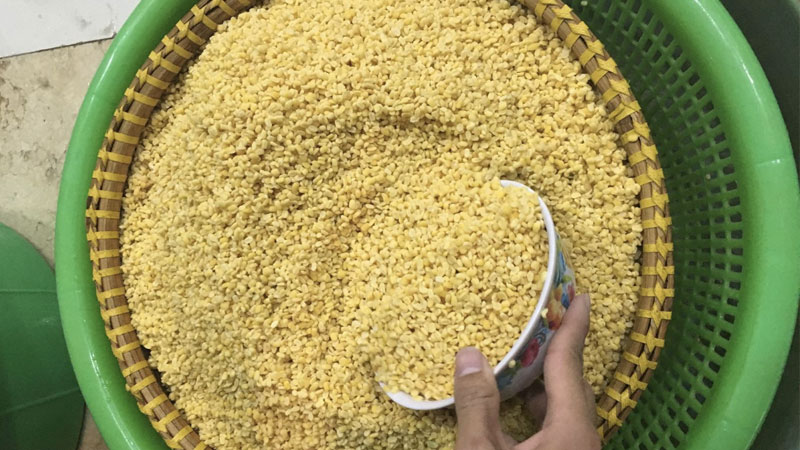 The Green Bean Conundrum
The Green Bean Conundrum
For Banh Chung, you can opt for either peeled or unpeeled green beans. Look for beans with uniform size, small grains, and a golden interior. If using peeled beans, soak them until soft, cook until tender, and then mash them into a smooth paste for the cake’s filling.
With unpeeled beans, soak them for 1-2 hours, discarding any that float to the top as they are likely rancid. Cook the beans and mash them, but remember that unpeeled beans offer a richer flavor and a beautiful golden hue.
5. Selecting Pork
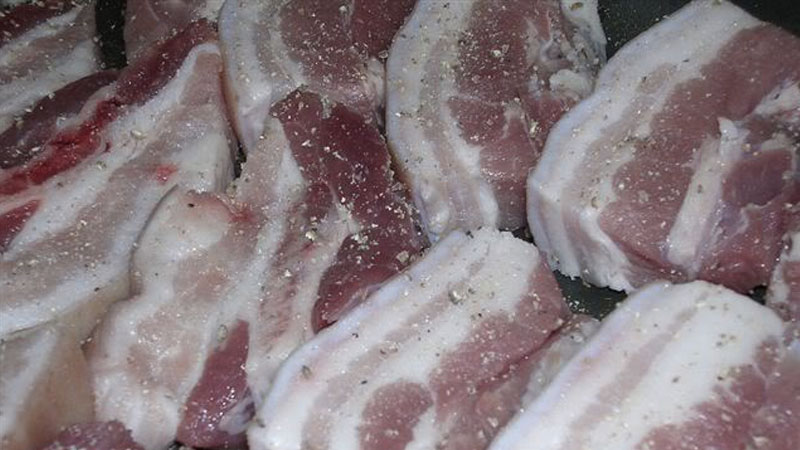 The Main Event: Choosing Pork
The Main Event: Choosing Pork
For the best results, opt for pork belly or pork shoulder. A combination of fat and lean meat will ensure your cakes don’t dry out. Avoid using all lean meat, as it can make the cakes less flavorful. Cut the meat into strips approximately 5-7 cm long and 0.5 cm thick.
Before wrapping the cakes, marinate the pork in a mixture of fish sauce, pepper, and onion for about 15 minutes. This simple step will infuse your Banh Chung with a depth of flavor that will impress your family and friends.
We hope these insights into ingredient selection will empower you to create delicious Banh Chung this Tet. If you have any questions or concerns, feel free to reach out, and we’ll be happy to help!
Exploring the Flavors of Glutinous Rice in Chung and Tét Cakes
With just weeks until the end of the year, many Vietnamese are already busy preparing for the traditional New Year’s Eve celebration which includes making offerings of banh chung and banh tet cakes. But with so many varieties of sticky rice to choose from, which type of rice is the best to use for making these tasty cakes? Here, we look at the many scrumptious options of sticky rice for creating the perfect banh chung and banh tet cakes.

























